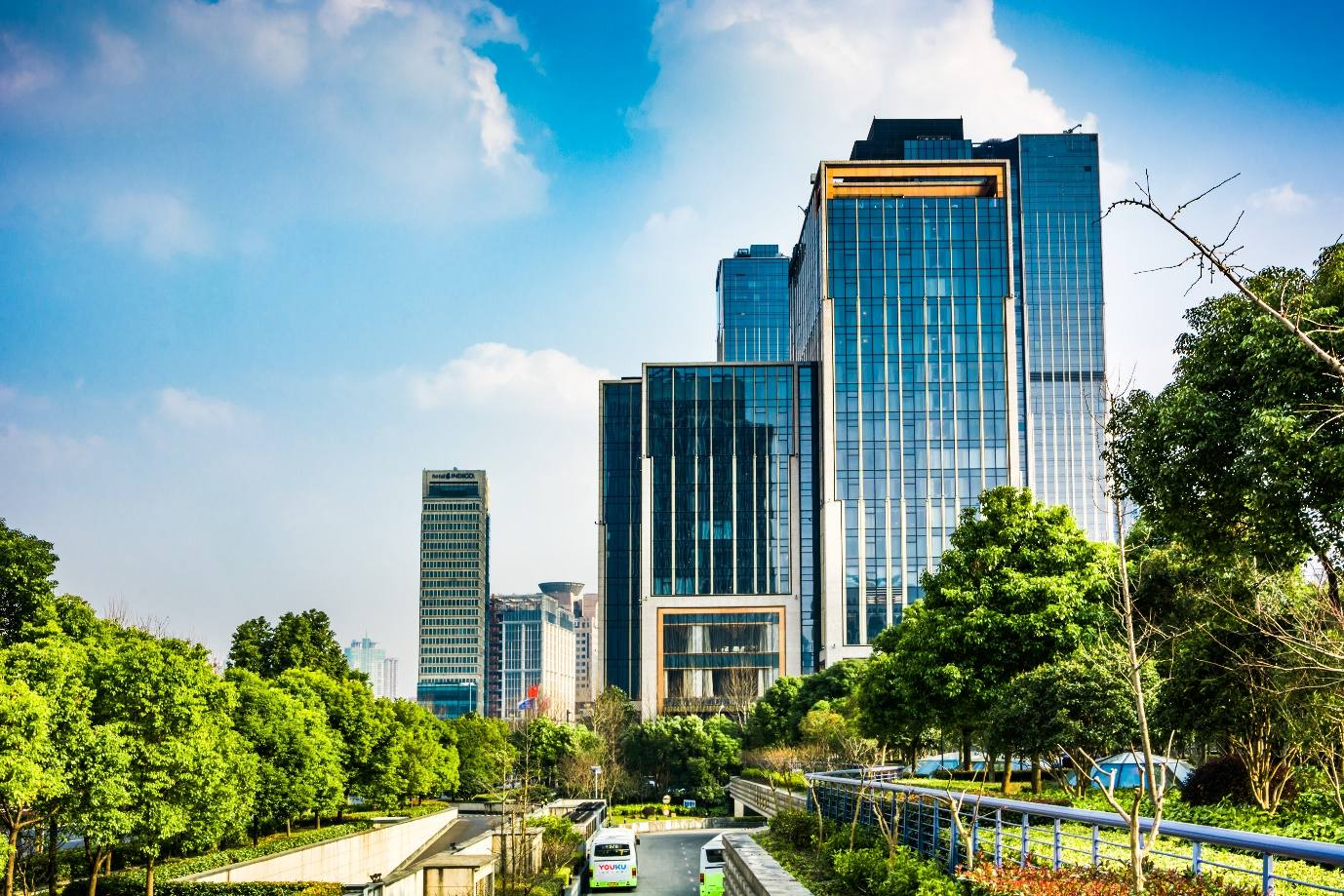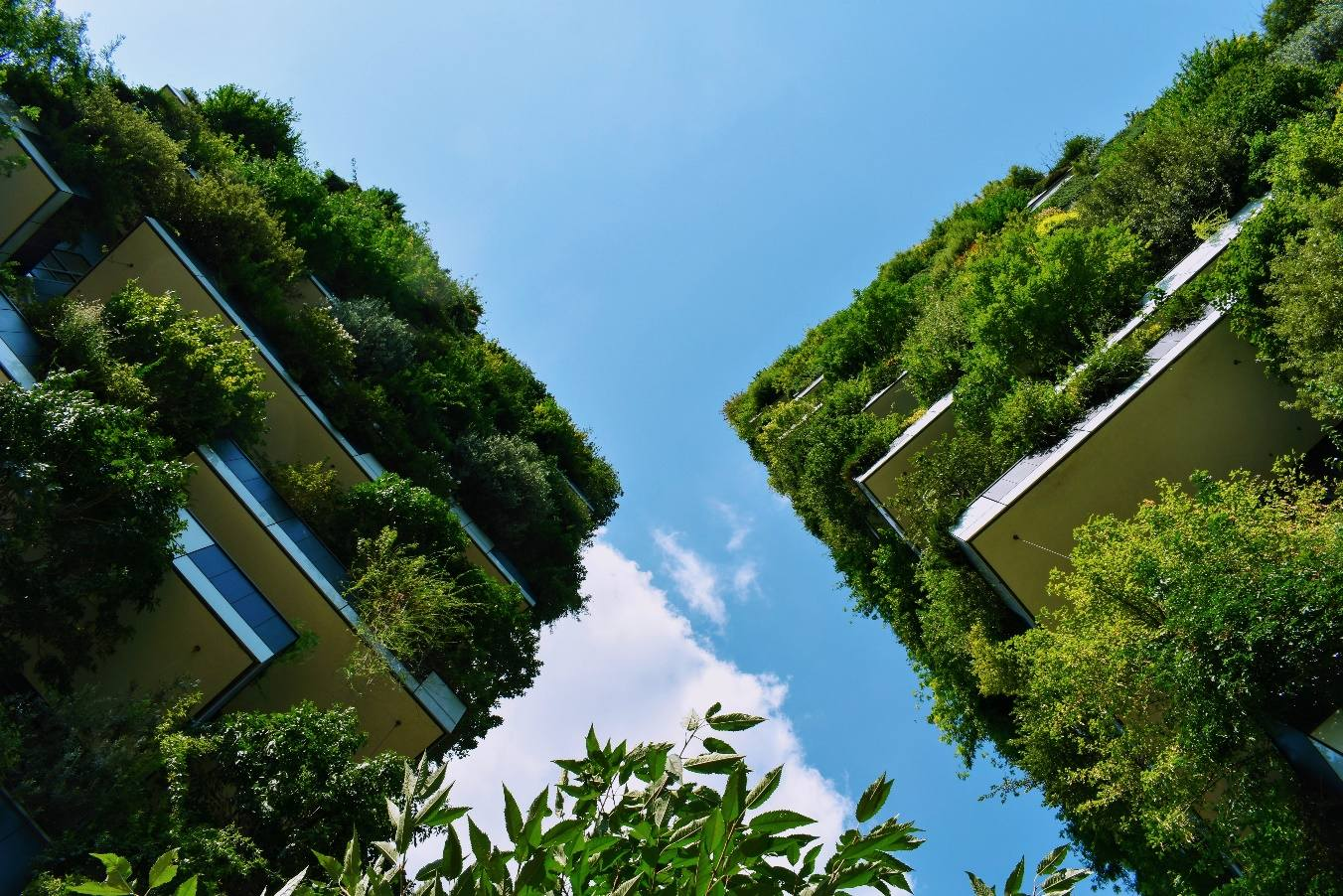please fill out the form. We're ready to receive your message.

The release date:2022/10/28 0:00:00
Major commercial facilities nowadays are equipped with automatic building control systems. Heating, lighting, air conditioning, cooling, shading, and door and window technologies are networked and communicate with each other. Take a look at green office buildings with state-of-the-art eco-friendly innovations, including storm water usage systems, internal power plants, and solar systems. These buildings combine futuristic technology, cutting-edge design principles and aesthetics to create products that protect the earth and make the environment greener. In the recent age of advancement, green technology applications in office buildings play the main role in a global environment. Let's deeply understand green technology and its applications.

What is a Green Office Building?
A green office building is a structure designed and constructed with the environment and human health in mind. Green office buildings are built with environmentally-friendly materials, and powered by renewable energy sources.

Since infrastructure has a life span of decades and even centuries, new construction is an essential and worthwhile investment. It should be well planned with a long-term vision of how it will benefit future generations without straining them. Green technology has a lot of benefits for commercial buildings. It is why understanding and planning the future impacts of climate change is so important for a green office building.
Energy efficiency
One of the best applications to reduce heat energy loss is to use high-performance building rind to minimize heat transfer between the interior and exterior of the building. The outer wall of a building is the outer "shell" of the building and includes walls, roofs, windows, doors, etc. Window and wall insulation materials with higher R values than conventional buildings are generally used for high-performance rinds. The R-value indicates the material's performance to prevent heat flow, and low-value materials such as metals are more likely to transmit heat than high-value materials such as oven-clamped cloth. Insulation does not release heat in winter and does not take in heat in summer, so it has an energy-saving effect throughout the year.
HDL Automation has a solution to bring commercial building energy to a whole new level. That is the distributed light storage system. Using storage units distributed in the building’s facades, this system makes full use of solar energy that will otherwise be reflected back to space. In the dark time (such as cloudy days and night time), the managing unit will automatically convert the stored energy into power for lighting and other operations. This is a smart solution for the energy crisis that are endangering many cities in the world.
Saving drinking water
Saving drinking water (freshwater) is another important application of green buildings. Water saving will become even more essential in the future as increasing temperatures and climate transformation intensify summer droughts.
Green office technologies have two main ways to save drinking water through their processes. The first is to utilize water more efficiently. Devices with smaller water flow use less water to do the same tasks, such as flushing the toilet. The other way is to use alternative water sources, such as rainwater and running water. Using alternative sources for tasks such as toilet cleaning and lawn irrigation, green buildings can ensure high-quality fresh water for essential tasks such as drinking and cooking.
Manage rainwater
Another application of green buildings is to manage rainwater due to heavy rain. The significant impact of climate change is expected to increase the amount of rain falling in autumn, winter and spring. Many green buildings can take in and process this rain or use it as an alternative water source for gardening and cleaning. The use of natural resources given to us will greatly contribute to the conservation of water resources that are decreasing. Rainwater management is one of the key reasons for green building because traditional development uses a lot of hardscapes, such as roof tiles and pavement, to prevent water from being absorbed into the ground.
Smart buildings, when used correctly, are greener, more user-friendly, and have lower operating costs than normal buildings. For example, a BAS can be configured to reduce the use of heating and cooling after a tenant has returned home. Some modern building automation systems use machine learning to predict room and unit downtime and adjust the use of air conditioning accordingly. For large buildings, setting the BAS to shift the power each day can reduce peak load and, as a result, energy costs. Large retail stores often employ light sensors that detect the level of sunlight entering through rooftop windows, and BAS adjusts indoor lighting usage accordingly. In the office, you can connect a simple human sensor to the BAS to detect that the room is not in use, turn off the lights and save energy.

1) Green office buildings decrease the environmental effect of doing business while improving efficiency, employee fitness, and productivity. In the past, many people thought "green" architecture was something that had to be imposed or sacrificed in the name of a vague benefit to the world around us. However, our image is changing drastically with the deepening of our understanding of environmentally-friendly architecture.
2) Green offices offer a variety of benefits to companies that use them. Companies that have realized an environmentally friendly office space can reduce heating and cooling costs by greening rooftops and improving building materials. In addition, by considering green buildings, the air quality is improved, and the health and productivity of employees are also improved. Green technology often extends the life of buildings.
3) Building owners benefit from ongoing operational cost savings, increased tenant retention rates, and increased building value. Building occupants can enjoy a more comfortable and healthier working environment and the market benefits of a "green" business.
In the future, it is not only by cars and trains that can operate automatically. Buildings are also becoming more automated. Automatically adjust heating, ventilation, and air conditioning. The lighting is also switched to appropriate brightness according to the external brightness and people coming and going. Furthermore, the system will pass through the building while meeting the needs of users and residents. To automatically suppress energy consumption to the minimum, lock a doorway, and operate an alarm system when leaving. Many companies aim to make the buildings automated with their latest technology, one of the best companies, HDL famous for its best solutions.
Such automation technologies are now being introduced in all new public and commercial facilities. Old existing properties are also optimized. The key word is building automation. The purpose of commercial building automation is any action not done by humans that affect equipment or systems.
Green Technology is a true future in response to modern changes in the global world. The aim is to ensure that the needs of all living things that continue to change due to global megatrends such as global warming can be met correctly as the needs of future generations. Green office buildings are not just about installing or recycling solar panels. True green buildings use an approach to the whole building to provide more environmentally friendly solutions to the usual building processes that provide water conservation, energy conservation and cleaner indoor air. If you are examining for someone who delivers the best solution for building automation with green technology, you can go ahead with HDL. Because of its unique and best solution, this company is unique in the market.



